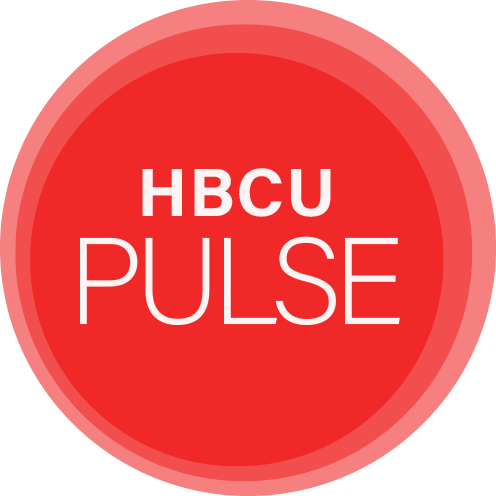In July, Nielsen and Urban Edge Network (who own & operate HBCU League Pass+) signed a deal with the goal of leverage Nielsen’s Scarborough qualitative measurement service and provide consumer insights on the HBCU communities where UEN has a presence across categories including media consumption, purchasing patterns, shopping behaviors, and leisure activities. Prior to HBCU Pulse’s partnership with Urban Edge Network (which started in August) we got in contact with the Nielsen team to expound upon the partnership, what this means for HBCUs and Nielsen’s overall place in the streaming landscape. Statistics and analytics determine strategy and money allocation.
The Nielsen measurement system also aids television networks and media companies in determining if a hit TV Show should be renewed or cancelled. In August, Nielsen signed an agreement with Amazon Prime and the NFL to measure viewership on Prime Video’s broadcast of Thursday Night Football, the first deal of its kind. Understanding Nielsen and it’s place in the media landscape aids in understanding why things happen in media and the high value of black consumers.
Check out our interview with Catherine Herkovic, Nielsen EVP, Managing Director, Local Television!
Why are Nielsen and Urban Edge Networks collaborating on this endeavor?
Catherine Herkovic: Nielsen is proud to collaborate with Urban Edge Networks (UEN) in their support of HBCUs. Our insights and expertise on audiences will help bolster understanding of the HBCU communities UEN serves, while gauging audience characteristics and behaviors to accurately convey product efficiency. Nielsen’s Scarborough qualitative measurement service provides consumer insights on the HBCU communities where UEN has a presence across categories including media consumption, purchasing patterns, shopping behaviors, and leisure activities.
What could the possible impact of this data be? Will it help in negotiation for media rights for HBCU Sports Conferences in the future?
Catherine Herkovic: As the media landscape becomes more complex, advertisers have more and more media platforms to invest in. Scarborough will provide a deeper understanding of the unique value of HBCU communities by providing media and consumption behaviors of HBCU fans. These insights can be used to illuminate the profile of UEN’s audience and reach. A better understanding of the audience will help advertisers better determine the potential impact of their investment — whether it’s in HBCU sports conferences or across all audiences that UEN reaches.
What is the value of Nielsen measurement in a media environment that is moving more towards streaming? Viewership is still currency for creators and companies, but streaming service providers tend to keep this data hidden.
Catherine Herkovic: As the media ecosystem and audience viewing becomes more fragmented, having a single, independent cross-media measurement solution across streaming, broadcast, and cable is essential to the industry. The industry is shifting to a streaming-first approach, aided by technology and informed by changing consumer behavior.
Today, nearly 40% of TV viewing (in the 18 to 54 demographic) consumption is on streaming platforms. Over-the-top (OTT) viewing is projected to grow to 230 million US subscribers by 2025. In this environment, advertisers need a single cross-media ad measure that is comprehensive and comparable across all platforms. Ad-supported video on demand (AVOD) made up 25% of streaming minutes in the second half of 2021. Our measurement will continue to provide insights on these evolving media trends of real people and everyday audiences.
What do you see as the future for Nielsen in the streaming era?
Catherine Herkovic: Today, we are living in a true renaissance period for the media industry as technology — including mobile phones, Smart TVs and a growing list of streaming services – is powering a rapid and dramatic shift in the television ecosystem. Audiences around the world are now in control of what they watch, when they watch, and by what medium they watch it. “Appointment television,” when viewers must tune in to a program on a certain day at a certain time, is losing steam – with a few lingering exceptions such as sporting events and breaking news.
Viewers, increasingly, are turning to streaming. The time U.S. viewers spent streaming increased 22.6% from July 2021 to July 2022, according to our streaming platform ratings. Our most recent data from The Gauge from July 2022 shows that – for the first time since we began tracking it – streaming viewership in the U.S. accounted for about 34.8% of total television consumption (the majority) compared to 28.3% last July. Broadcast viewership declined to 21.6% compared to 23.8% last July and cable viewership declined to 34.4% from 37.7% last July.
In this rapidly evolving media landscape, both media buyers and media sellers are reacting and adapting their business models to follow the audience. This year, digital spend is expected to reach $155 billion (including display, search, streaming audio, YouTube, Facebook and more) compared to $68 billion for linear media. By 2024, digital spend is projected to reach $223 billion compared to $66 billion for linear.
As our clients navigate this new digital world, they need comparable cross-media measurement across linear and streaming that provides deduplicated measurement of reach and frequency. Our marketers want data that reflects all audiences, on all screens, 24 hours a day so they can better understand viewer behavior and engagement and respond with appropriate content and campaigns. They want to use Nielsen measurement as a currency and will pay large sums to networks for the opportunity to reach a given number of people, as defined by us.
Naturally, content creators are also very eager to see our holistic viewership ratings. Audiences are not subscribing to streaming platforms to view the ads. Content is king. The majority of total revenues in the media industry are related to content and content distribution and historically, content creators have used Nielsen ratings to inform content development and distribution decisions. Nielsen’s role in serving this evolving ecosystem is more critical than ever as networks factor our data into their programming decisions and audience pursuit.












